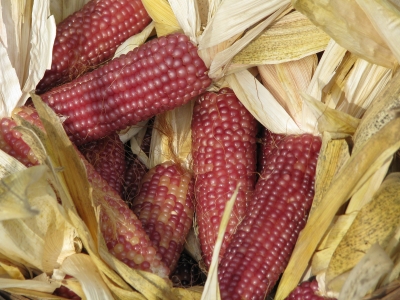A VERY GOOD GARDEN NOW
/2 Comments/in Soil, Vegetables/by Lee ReichFinally
A recent blog post of mine was titled and about some of the reasons it was “My Worst Garden Ever.” From comments and emails, I learned that such was the case generally in this part of the world. That was then.
 Recently, as I opened and walked through the gate into my vegetable garden, I thought, hmmm, things are looking pretty spiffy in the garden. Even a seasoned gardener friend remarked, “There’s so much green!” And that green is not from weeds, but from neat rows of napa cabbages, large heads of lettuce in various shapes and shades of green, and dark green rows of arugula and mustard. Leafy tops of Watermelon radishes (the name from the look of the sliced roots, not any affinity in flavor) and sweet Hakurei turnips perched above swelling roots. Read more
Recently, as I opened and walked through the gate into my vegetable garden, I thought, hmmm, things are looking pretty spiffy in the garden. Even a seasoned gardener friend remarked, “There’s so much green!” And that green is not from weeds, but from neat rows of napa cabbages, large heads of lettuce in various shapes and shades of green, and dark green rows of arugula and mustard. Leafy tops of Watermelon radishes (the name from the look of the sliced roots, not any affinity in flavor) and sweet Hakurei turnips perched above swelling roots. Read more
HOME-GROWN GRAINS FOR ANYONE & EVERYONE
/0 Comments/in Gardening/by Lee ReichShow Some Respect
The problem with popcorn is that it, like Rodney Dangerfield, “don’t get no respect.” Sure, it’s a fun food, nice to toss into your mouth while you watch a movie. But that’s been the case only since the 1930s.
Popcorn is a grain, a whole grain, as good a source of nourishment as wheat, rice, rye, or any other grain. It was among the foods brought by native Americans to the first Thanksgiving dinner.
For anyone who likes the idea of raising their own grain, popcorn is a good choice. It’s easy to grow, it’s easy to process, and it’s easy to save seed from one year to the next. I grow two varieties — Pink Pearl and Dutch Butter-flavored — and have saved seed from my plantings for over 25 years.

Pink Pearl popcorn
Popcorn is also fun to grow, especially with children around. Growing it yourself also lets you choose a variety you like. You might think popcorn is just popcorn; they all taste the same. Not so! Last year’s crop yield came up a little short (my fault, for not checking the drip irrigation) so, for the first time in many years, I just purchased some to tide us over until this season’s crop becomes ready to eat. The purchased popcorn burst into large, fluffy clouds, but to call the flavor bland would be an understatement. Nothing like the rich flavors of Pink Pearl and Dutch Butter-flavored. Read more
TIME FLIES, OR DOES IT?
/8 Comments/in Gardening, Vegetables/by Lee ReichA Real Olde Tyme Country Fair
Eighteenth century essayist and poet Charles Lamb wrote, “Nothing puzzles me more than time and space; and yet nothing troubles me less.” I agree and disagree. You can always revisit a space, but time, it keeps moving; there’s no grasping on to it.
I was reminded of Lamb’s musing on a recent visit to Maine. There were two reasons for the visit, the first being to attend and give a couple of presentations at the Common Ground Fair, organized and on the grounds of the Maine Organic Farming and Gardening Association (mofga.org). I highly recommend a trip to the Fair, which is always held around the third week in September.
This is not your usual country fair. For one thing, you won’t find bright lights and noisy rides there; the Fair closes down at the end of each day. What you will find at the Fair is a wide array of Maine grown and Maine produced food, wool and woolen goods, wooden bowls and spoons, and numerous other items. Also many workshops and demonstrations of scything, spinning wool, blacksmithing, and other rural skills, and live music and plenty of livestock.
A Mere Half Century
I haven’t forgotten about Charles Lamb. His musings speak into the second part of my visit, which was to Four Season Farm, home, along with his wife Barbara Damrosch, of farmer, author, and a leading proponent of organic farming, Eliot Coleman. Read more




